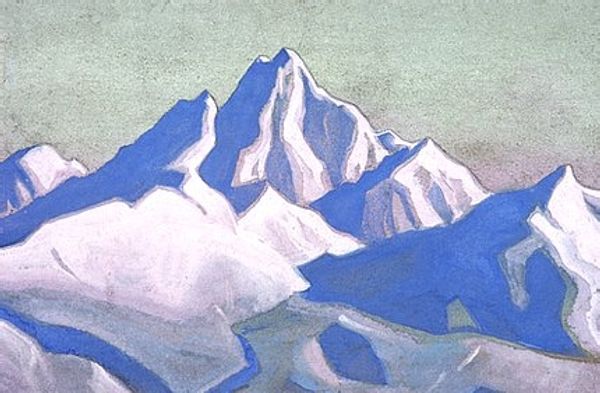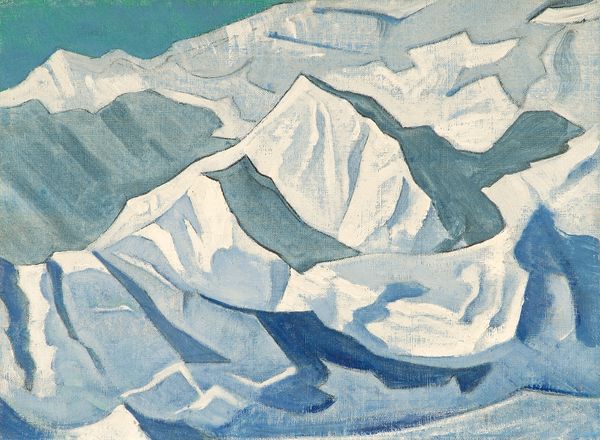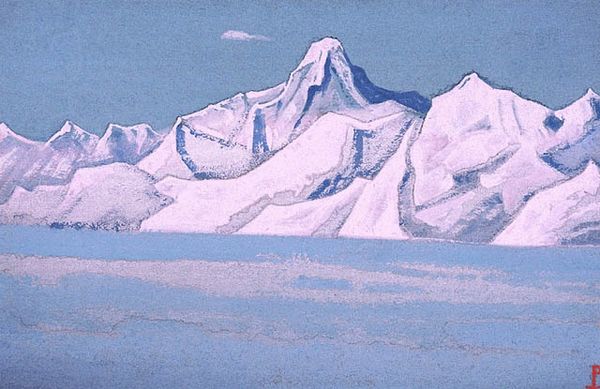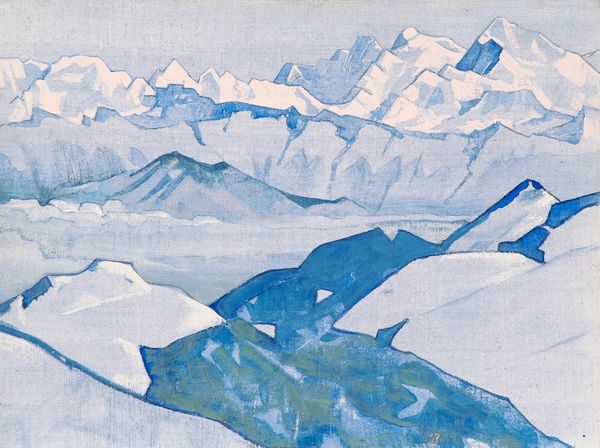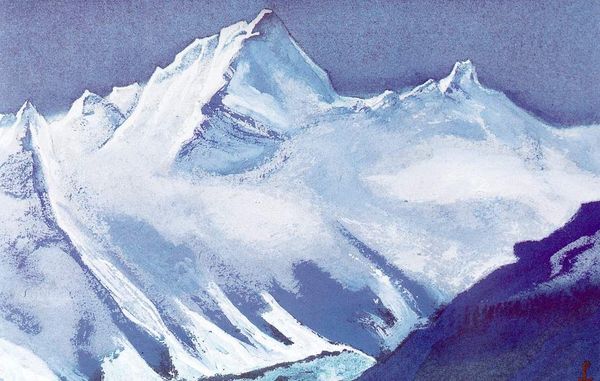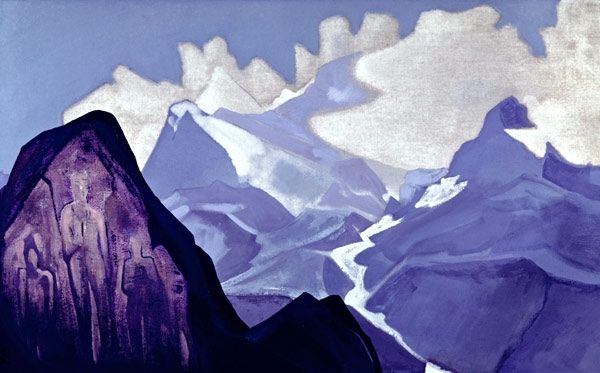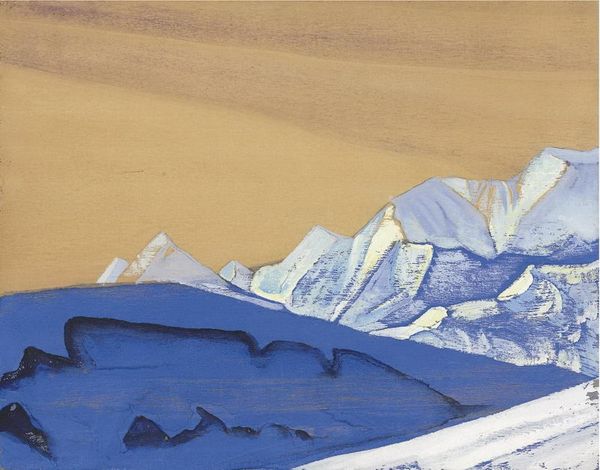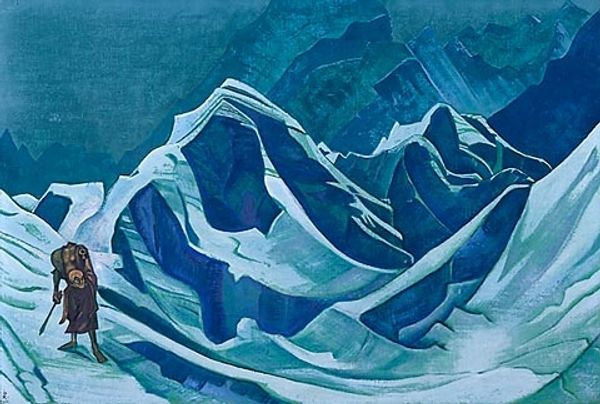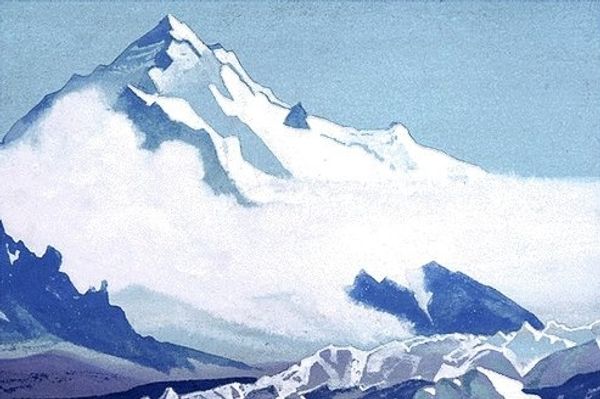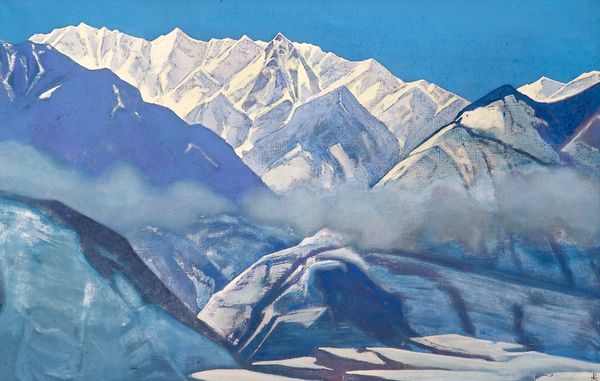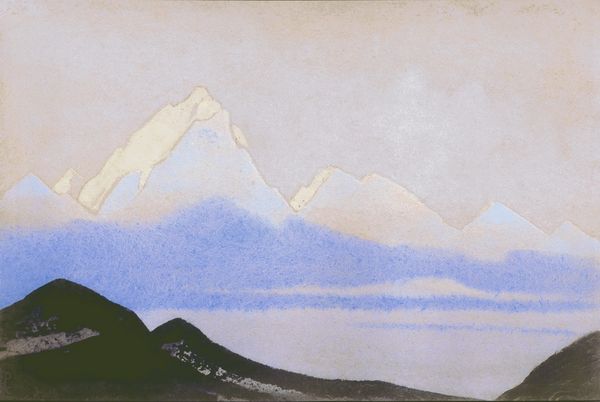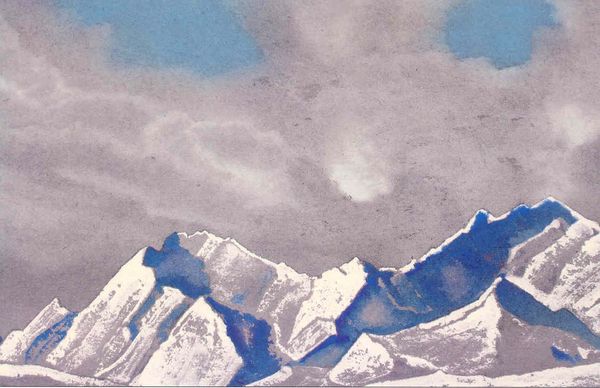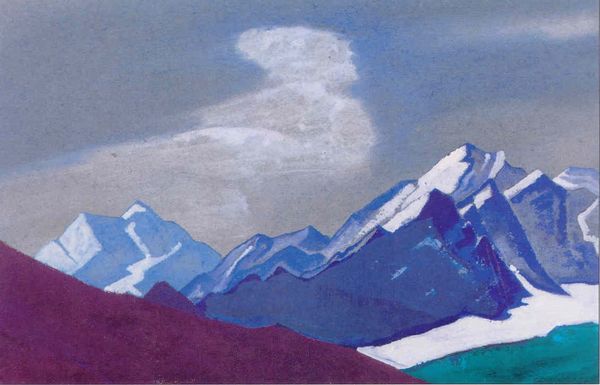
Copyright: Public domain
Curator: This is "Himalayas (study)" painted by Nicholas Roerich, around 1930. It is an oil on canvas. Editor: Stark! Almost painfully bright, actually. I see solid blues and whites – not a lot of nuance, but intensely evocative of a mountain range. There's something simplified and forceful about the composition, really. Curator: Yes, Roerich's work, even these studies, carry the weight of theosophical and political aspirations. He sought to synthesize spiritual ideals with artistic expression and these landscapes were very popular. The public associated these monumental landscapes with utopian ideals of progress, you know? Editor: Well, speaking of ideals, you've got to admire Roerich’s guts – he spent a large part of his life in Central Asia, including these very Himalayas. Did his access to rare pigments and techniques influence his process and style in ways that changed both the materials themselves and the market? Curator: It's quite probable! Roerich was quite fascinated by local traditions. I think understanding the materials and process, one can begin to grasp how cultural value gets encoded into something we consider fine art. The landscapes he captures represent a place but equally reflect specific ideological goals. He founded institutions! Museums! Editor: True, and looking at these geometric forms... it makes me think of mass-produced postcards alongside fine art. The almost naive presentation...It has accessibility that’s somewhat uncommon for high art from that era. Was Roerich consciously courting a broad audience with a simplified iconography? Curator: Roerich certainly tried to promote an universal culture accessible to anyone, across all nationalities and social status, he aimed for broad appeal. His landscapes depict grand themes which carry political charge due to his direct involvement and global recognition. Editor: Hmm...it almost forces us to re-evaluate our ideas about artistic value. I walk away thinking of landscape as a commodity, both aesthetically and ideologically charged. Curator: Yes, this piece demonstrates the confluence of painting materials, political ambitions and an individual’s legacy. Very interesting, isn't it?
Comments
No comments
Be the first to comment and join the conversation on the ultimate creative platform.
